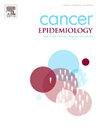人乳头瘤病毒在非洲和智利北部安托法加斯塔的流行情况
IF 2.3
3区 医学
Q3 ONCOLOGY
引用次数: 0
摘要
宫颈癌主要由人乳头瘤病毒(HPV)引起。尽管在HPV感染的早期检测方面取得了所有进展,但宫颈癌仍然是妇女中最常见的癌症类型之一,在拉丁美洲发病率很高。我们之前曾报道过科金博地区HPV的流行情况,因此本研究的目的是确定智利北部安托法加斯塔和非洲地区女性HPV的发病率。方法采用qPCR方法对2024年妇科检查的823例15 ~ 79岁女性宫颈样本进行HPV基因型检测。其中,199人来自非洲,624人来自智利北部的安托法加斯塔。结果总HPV阳性率为19.20 %;23.62 %在非洲和17.79%在安托法加斯塔。G1(15 ~ 29岁)和G2(30 ~ 79岁)年龄组HR-HPV阳性率分别为30.92 %和16.54 %。在我们的整个人群中,最流行的HPV感染基因型是HPV16、hpv31和HPV52。全组HPV感染以单次感染为主(75.95 %),其次为双次或多次感染(24.05 %),1组和2组差异无统计学意义,单次感染患病率分别为72.34 %和77.48 %。结论非洲和安托法加斯塔地区妇女的HPV感染流行率似乎低于以前报告的科金博,但与卫生部报告的智利相似。这反映了我们这个幅员辽阔的国家中HPV患病率的巨大异质性。另一方面,14种HR-HPV基因型的分子检测很重要,因为它不仅可以帮助妇女避免宫颈癌,而且还可以为引入针对更广泛的HR-HPV的新疫苗提供信息。本文章由计算机程序翻译,如有差异,请以英文原文为准。
Prevalence of Human Papillomavirus in Arica and Antofagasta, in the north of Chile
Background
Cervical cancer is primarily caused by the Human Papillomavirus (HPV). Despite all the advances in early detection of HPV infection, cervical cancer remains one of the most common types of cancer in women, with a high presence in Latin America. We previously reported on the prevalence of HPV in the Coquimbo region, so the objective of this study was to determine the frequency of HPV in women in the Antofagasta and Arica regions of northern Chile.
Methods
We analyzed 823 cervical samples from women aged 15–79 who attended gynecological checkups during 2024 to detect HPV genotypes using qPCR. Of these, 199 come from Arica and 624 from Antofagasta, in northern Chile.
Results
The overall HPV positivity rate was 19.20 %; 23.62 % in Arica and 17.79 % in Antofagasta. The HR-HPV positivity rates in the G1 (15–29 years) and G2 (30–79 years) age groups were 30.92 % and 16.54 %, respectively. The most prevalent genotypes of HPV infection among our entire population were HPV16, HPV 31, and HPV52. Single infection (75.95 %) was the main HPV infection pattern observed in the entire group, followed by double or multiple infection (24.05 %), which was similar in Groups 1 and 2, where the prevalence of single infection was 72.34 % and 77.48 %, respectively.
Conclusion
The prevalence of HPV infections in women in the Arica and Antofagasta regions appears lower than that previously reported for Coquimbo, but similar to that reported in Chile by the Ministry of Health. This reflects the great heterogeneity of HPV prevalence in our vast country. On the other hand, molecular detection of 14 HR-HPV genotypes is important because it will not only help women avoid cervical cancer, but could also inform the introduction of new vaccines targeting a broader spectrum of HR-HPV.
求助全文
通过发布文献求助,成功后即可免费获取论文全文。
去求助
来源期刊

Cancer Epidemiology
医学-肿瘤学
CiteScore
4.50
自引率
3.80%
发文量
200
审稿时长
39 days
期刊介绍:
Cancer Epidemiology is dedicated to increasing understanding about cancer causes, prevention and control. The scope of the journal embraces all aspects of cancer epidemiology including:
• Descriptive epidemiology
• Studies of risk factors for disease initiation, development and prognosis
• Screening and early detection
• Prevention and control
• Methodological issues
The journal publishes original research articles (full length and short reports), systematic reviews and meta-analyses, editorials, commentaries and letters to the editor commenting on previously published research.
 求助内容:
求助内容: 应助结果提醒方式:
应助结果提醒方式:


